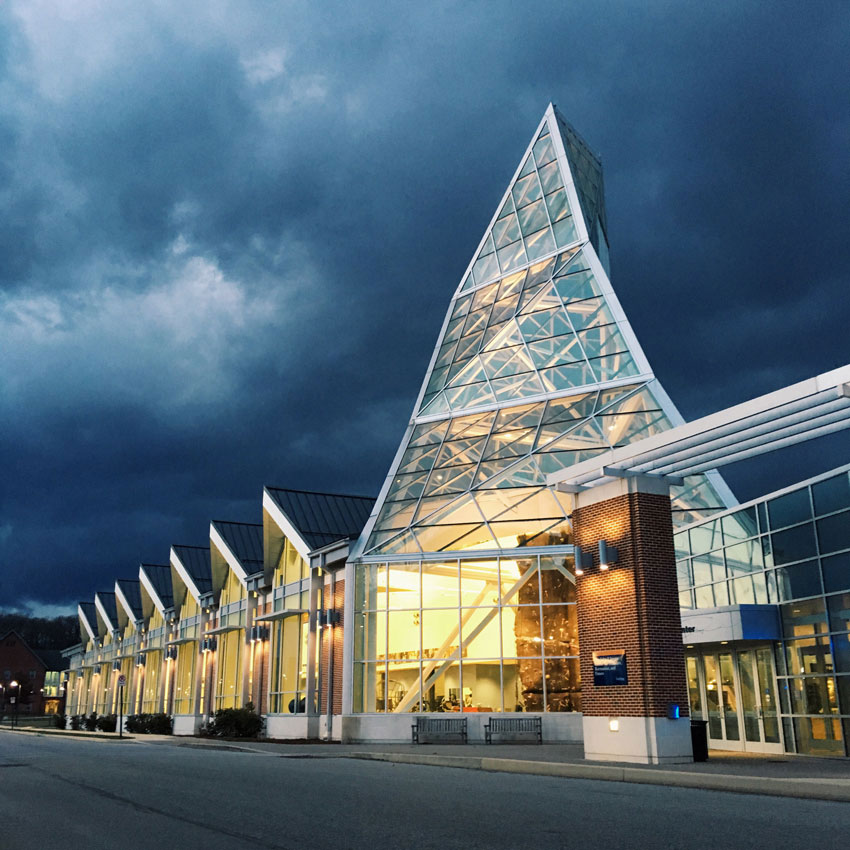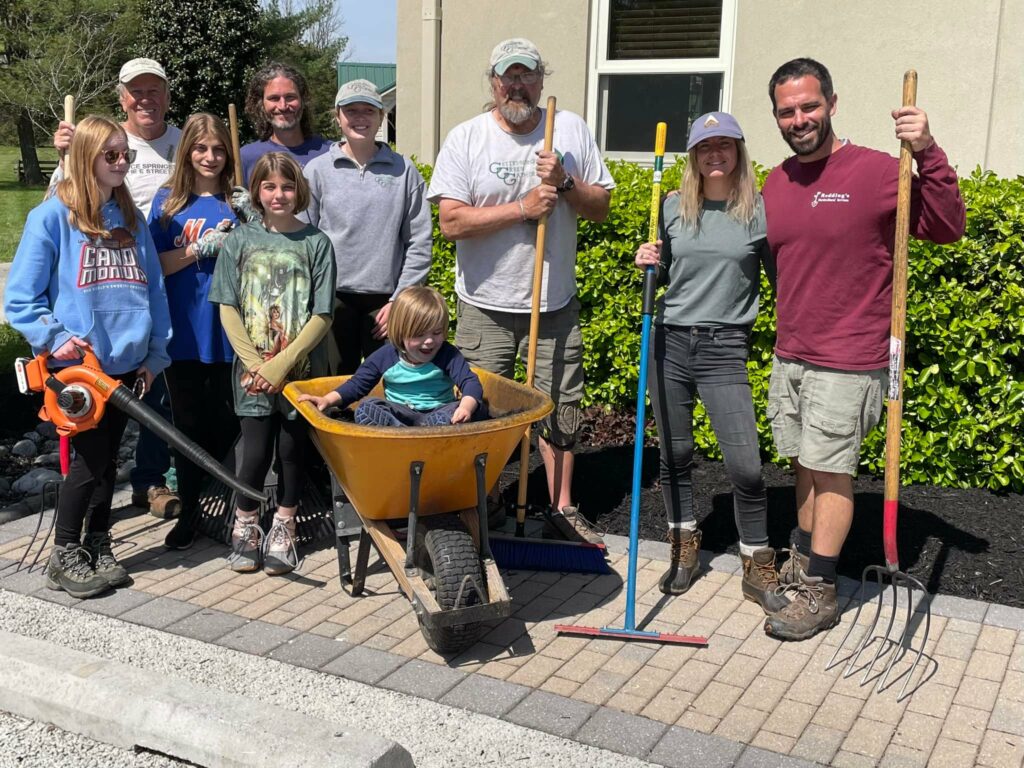Climate Change in Adams County
By Karen Hendricks
You’ve likely noticed changes—extreme changes—in our weather. Unusually warm days during the winter, more intense rainfalls, hotter and longer heat waves in the summer.
Climate change is happening—not in a far-away location, but everywhere, including right here in Adams County.
First, the Science
Changes in the weather don’t equal climate change, right? Right. Weather is what happens on a daily basis. But climate, as the long-term average of weather over decades, gives us a bigger picture. And climate change is a phrase that indicates those averages are trending hotter and wetter, breaking out of the patterns.
Why is this happening? It’s due to the change in our atmosphere. Scientists first noticed the greenhouse effect in the 1820s, and today more than 99.9% of all scientists who have published in the field agree that climate change is real, and human activity—primarily emissions from the burning of fossil fuels—is driving the change.
This base of information is agreed upon by Pennsylvania’s Department of Conservation and Natural Resources (DCNR) as well as additional state, national and international scientists, and science-based organizations such as NASA.
Adams County’s Data: Hotter and Wetter
According to the National Oceanic and Atmospheric Administration (NOAA), in 2022 Adams County’s average temperature was 53.8 degrees Fahrenheit. That’s 2.7 degrees higher than our average temperature of 51.1 observed between 1901–2000. York County’s anomaly was 3.2 degrees higher. Statewide, every county was between 1.5 to 3.4 degrees hotter than its historical average temperature in 2022.
In terms of precipitation, Adams County recorded 43.87 inches in 2022, and that’s 1.64 more inches than the average of 42.23 inches measured between 1901–2000. York County’s figures are higher, with 45.62 inches of precipitation falling in 2022—that’s 4.25 inches higher than its historical average.
All Pennsylvania counties recorded higher
than average totals in 2022 except for two.
Worldwide, the average global temperature—after being historically stable over the course of modern human civilization—began warming during the Industrial Revolution in the 1880s. Since 1900, the planet has warmed by 1.8 degrees Fahrenheit. Here in Pennsylvania, if we don’t change any of our human habits, the Department of Environmental Protection (DEP) estimates that temperatures will warm another 5.9 degrees by 2050.
Experts agree that climate change facts can be worrying. And using the phrase “climate change” can unfortunately feel politicized. But meeting real people working on solutions—and knowing that we can be part of the solution too—can make the subject more approachable and less politicized. Let’s meet some of those people making a difference right here in Adams County.
Going for the Green
At the Adams County Conservation District, watershed specialist Joe Hallinan has some lofty goals.
“Planting trees is one of biggest, most cost-effective ways to clean the water and stabilize streams,” says Hallinan. “My main focus is ‘save the bay’—bringing that to Adams County, because the same water we drink and have here as a resource ends up in the bay.”
Adams County contains headwaters, with northern streams feeding into the Susquehanna River and southern streams flowing into the Potomac River. Although he doesn’t always label it as a climate change initiative, Hallinan says tree-planting is a best practices tactic that does indeed reduce greenhouse gases.
In 2022, 22,000 native trees and shrubs were planted, thanks to the Adams County Planting Partnership, which includes the Adams County Conservation District, Watershed Alliance of Adams County, and the Chesapeake Bay Foundation’s 10 Million Trees Partnership. It’s a program that distributes free native trees and shrubs every April and September.
“It’s a really neat program, whether someone in town plants two or three, or a farmer plants 500,” says Hallinan. “These are water-loving riparian species. The trees at big box stores aren’t always native, so they don’t offer the same amount of benefit. For example, a native dogwood will support over 30 species, but a forsythia only supports a handful.”
In terms of stream rehabilitation projects, Willoughby Run in Cumberland Township is slated for rehabilitation this year, while a project was just completed at Culp’s Run on the battlefield. Hallinan says one of the most meaningful current projects is tied into the curriculum at Gettysburg Area School District.
“We show up with trees at Rock Creek, which flows across the high school’s property,” says Hallinan. “We’ve been working on the riparian buffer over the last four years, and some of the freshmen that were involved from the beginning can see the sycamores and silver maples they planted are now 25 feet tall.”
Gearing Up for EVs
Adams Electric Cooperative includes nearly 34,000 members in five counties, including the highest concentration of members—13,000—in Adams County. That means roughly 22% of Adams Countians receive their electric power from Adams Electric.
Worldwide, the energy sector is responsible for about 75% of all greenhouse gas emissions, with coal-fired power plants considered the worst offender. So where does Adams Electric’s power come from?
“The good news for us is that our power supply comes from 65% resources that are more climate-friendly than others. 55% is nuclear, which yes, it does have waste, but it does not emit CO2 into our environment,” says Adams Electric Cooperative CEO Steve Rasmussen. “We also get some hydro sources from New York Power Authority and the Raystown Lake project, and that comes close to another 10% of our power.”
One way members can make an impact in climate change is by participating in Adams Electric’s U-Shift, U-$ave program.
“The program has been around since the ’80s, and it’s the most environmentally friendly way you can go,” says Rasmussen. For those participating in the program, about one-third of the membership, the cooperative turns off certain devices, primarily water heaters, during peak times. “When electricity is the most expensive and at the highest demand, we actually turn those devices off, and we can shave our peak by about 10%.”
About 300 members have solar panels on their homes or businesses, and about 50 members have charging stations for electric vehicles (EVs). But Rasmussen expects that number to rise dramatically over the next several years, and the co-op is preparing by upgrading transformers to handle the additional demand.
For more information on Adams Electric Cooperative, visit adamsec.coop.
Proactive Public Land Management
The National Park Service (NPS) is taking a proactive approach to climate change and how it’s uniquely affecting each of the national parks across the country. At many of these national treasures, including Gettysburg National Military Park (GNMP), climate change concerns include the changing weather; the spread of invasive, non-native plants and trees; effects on historic structures, including wooden fences; and the implications of longer tourism seasons.
“We’re trying to build climate change resilience and adaptability strategies into our resource management planning,” says Jason Martz, GNMP spokesperson. “As altered weather patterns and extreme weather events become more frequent, it’s important to ensure that ecosystems are not only resilient against short-term impacts but can also adapt and change over time in response to these stressors.”
And implementing these natural resource management strategies is a “value-added proposition,” says Martz, that will not only prepare battlefield acreage for climate change, but also “provide a multitude of benefits to plant and wildlife communities, stream and wetland integrity, and overall ecosystem health and function. Revegetation projects or wetland restoration efforts not only serve to increase ecosystem resilience and adaptability in the long term but can also improve habitat quality and watershed health in the near-term.”
For more information on NPS Climate Change Initiatives, see nps.gov/subjects/climatechange.
Aiming for Carbon Zero
In 2032, nine years from now, Gettysburg College will celebrate its 200th anniversary. But that milestone isn’t the only one the college wants to celebrate at that time. The college is committed to becoming carbon neutral by 2032.

“We’re at 45% presently,” says Jim Biesecker, Gettysburg College’s associate vice president of facilities, planning, and management. “It’s a combination of a lot of different things that will get us there.”
For example, 100% of the college’s electricity is green, supplied by wind or solar power. The college isn’t constructing many new buildings, but the most recent two are LEED gold-certified. More than 50% of the college’s waste is recycled. And, in partnership with the United Way of Adams County, the “Give it up for Good Sale” has redirected a total of 425 tons of reusable tables, refrigerators, and other items from the waste stream while raising $350,000 for the United Way since 2004.
On its way to becoming carbon-neutral, the college just received a prestigious gold rating from the Association for the Advancement of Sustainability in Higher Education. In its previous 2016 evaluation, Gettysburg College received silver.
Biesecker and professor Randy Wilson serve as co-chairs of the college’s climate change and sustainability committee, working to evaluate and implement green practices.
“As an institution of higher education, we have a commitment to understanding problems in the world, and that gives you some insights into, potentially, some solutions,” says Wilson, who teaches numerous environmental studies classes. “So I think it’s part of the educational mission, showing [students]a way to live in the world that’s more environmentally sustainable and trying to model that … trying to be good citizens.”
To learn more about Gettysburg College’s sustainability plans, visit gettysburg.edu/about-the-college/sustainability.
In the Green Spotlight: Gettysburg Green Gathering
Action is important to the Gettysburg Green Gathering (GGG). The nonprofit organization was launched about a dozen years ago, with the goal of holding a festive annual event in conjunction with Earth Day, “just a fun time promoting green consciousness without it being a huge political issue,” says Steve Zimmerman, longtime co-chair.



“When the pandemic hit, we pivoted from doing the annual festival to doing active, environmentally related stuff, like tree planting and trash pickups,” says Matt Crowner, GGG co-chair.
Just as actions speak louder than words, the group hopes their climate-friendly activities help break down barriers that might exist around the phrase “climate change.”
“What can we do that’s not political? What’s something that nobody could hate? How about planting trees—there are a whole bunch of upsides, in addition to helping with climate change,” says Crowner.
Over the past five years, the group has planted 150 native trees sponsored by area residents and businesses, including many at Gettysburg’s Rec Park. And those sales are now funding scholarships for Adams County students pursuing environmental college studies, as well as youth attending Strawberry Hill Nature Preserve’s camps.
The group agrees that climate change, on a global scale, can feel overwhelming. That’s why they focus on action steps that can empower Adams Countians on a local level.
“My own sense is the people who recognize climate change and care about it are an invisible majority,” says Will Lane, also a GGG co-chair. “And it’s easier to begin a conversation talking about planting a tree, or clean streams—things we can all understand.”
Cleaning up area waterways is one action Lane finds meaningful.
“My wife and I made it a project to clean up sections of the Conewago Creek. We’ve cleaned up everything from mattresses and TVs to whiskey bottles—five pickup loads with the group Trout Unlimited,” Lane says. “There’s no point getting bogged down in an argument about the politics—let’s just get connected and work shoulder to shoulder on a project and form relationships. Then we can talk about some of the issues.”
Education informs the actions GGG takes, whether it’s bringing in speakers, holding workshops, or reading books together. Green Gettysburg Book Club is an offshoot of GGG that Lane has coordinated for three years. While the club includes about 60 members, there’s a greater number—250—on the group’s emails. Members read about six books a year, focused on leading environmental issues—plastics, biodiversity loss, water quality, and more.
“We have a lot of fun. You get a sense of community with others, and I try to keep it optimistic,” says Lane. “Part of the idea is to be better informed of potential solutions, because people don’t always have time to dig into these things themselves, so we’re trying to train ourselves together.”
Through the winter, the group read a book about the catastrophic decline in the number of insects, including bees, and the implications on our environment.
“The book club is very stimulating,” says Zimmerman. “There are differing opinions, but it’s very civil.”
Whether it’s reading books or planting trees, many of the actions GGG takes are focused on helping Adams Countians evaluate the consumerism mindset that underlies many climate change issues.
“There’s something to be said for facing the problem [of climate change]squarely and stepping out of our mindset of denial,” says Lane. “Alcoholism is an addiction—and in treatment, you face it and start your journey. I think the time is coming where we need to face climate change squarely and drive a Renaissance to mobilize, to deal with this problem. People are walking around in a dream of endless consumption. Everything we can do practically is great, but we’re in the midst of a cultural shift, and it’s happening in little places here and there.”
Calling All Bookworms:
New members and visitors are welcome to join the Green Gettysburg Book Club by contacting Will Lane at wlane@gettysburg.edu.
Celebrating Butterflies
You’re invited to the next Gettysburg Green Gathering’s speaker series’ event.
April 29, 1 p.m.; doors open at noon
Gettysburg Rec Park, Charlie Sterner Recreation Building
Featuring butterfly expert and children’s book author
Carol Pasternak
For more information, visit gettysburggreengathering.com.
Writer Karen Hendricks began researching climate change in 2022 by interviewing local and state experts, and completed a Climate Change Journalism college course, all with the purpose
of bringing Pennsylvania-based climate change stories to light. This is her first piece on climate change for Celebrate Gettysburg.




